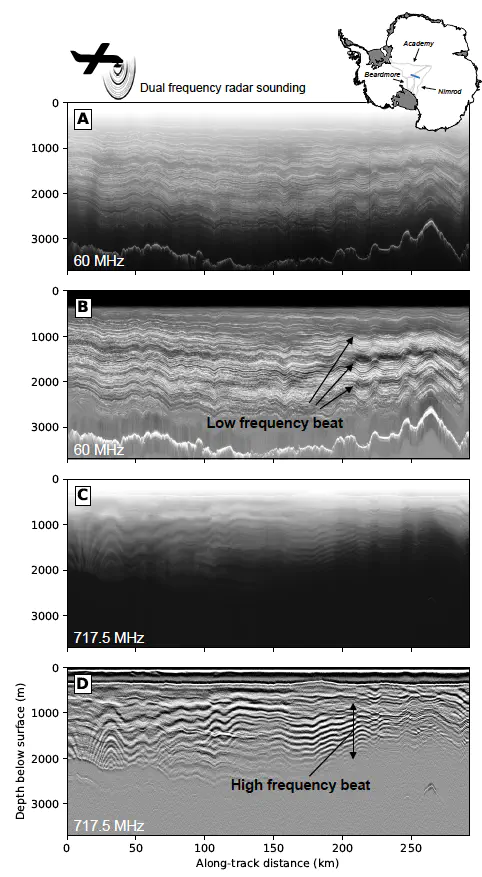
Abstract
An ice crystal has uniaxial symmetry about its c axis and is therefore electrically anisotropic. Anisotropy in the real dielectric permittivity at radio wavelengths means that ice is birefringent to radar waves, including those commonly used to sound through ice masses. Radar birefringence can be targeted as a measurement signal to interpret ice anisotropy for ice rheology or ice-flow history; however, birefringent losses can also act as noise when targeting the reflected radar power as a measure of interface properties or attenuation. Here, we implement a method for correcting birefringent losses in multi-frequency radar sounding. Birefringent loss fringes occur at a regular interval that depends on the center frequency of the transmitted signal, so correlating loss fringes from independent measurements (i.e. from radar systems with different frequencies) enables a more precise and robust estimate of electrical anisotropy, which can then be used as a correction for birefringent power losses. We demonstrate our method with an example from a dualfrequency instrument recently used for sounding the Antarctic Ice Sheet. We choose an example where the loss fringes are visible within the specular englacial layers, but we argue that our correction method is useful even for a single diffuse reflector where the loss fringes may be obscured by variations in the reflector properties. Similar birefringent correction methods can be applied to planetary radar sounding cases, such as the two radar sounders orbiting Mars or the dual-frequency radar instrument onboard the Europa Clipper.